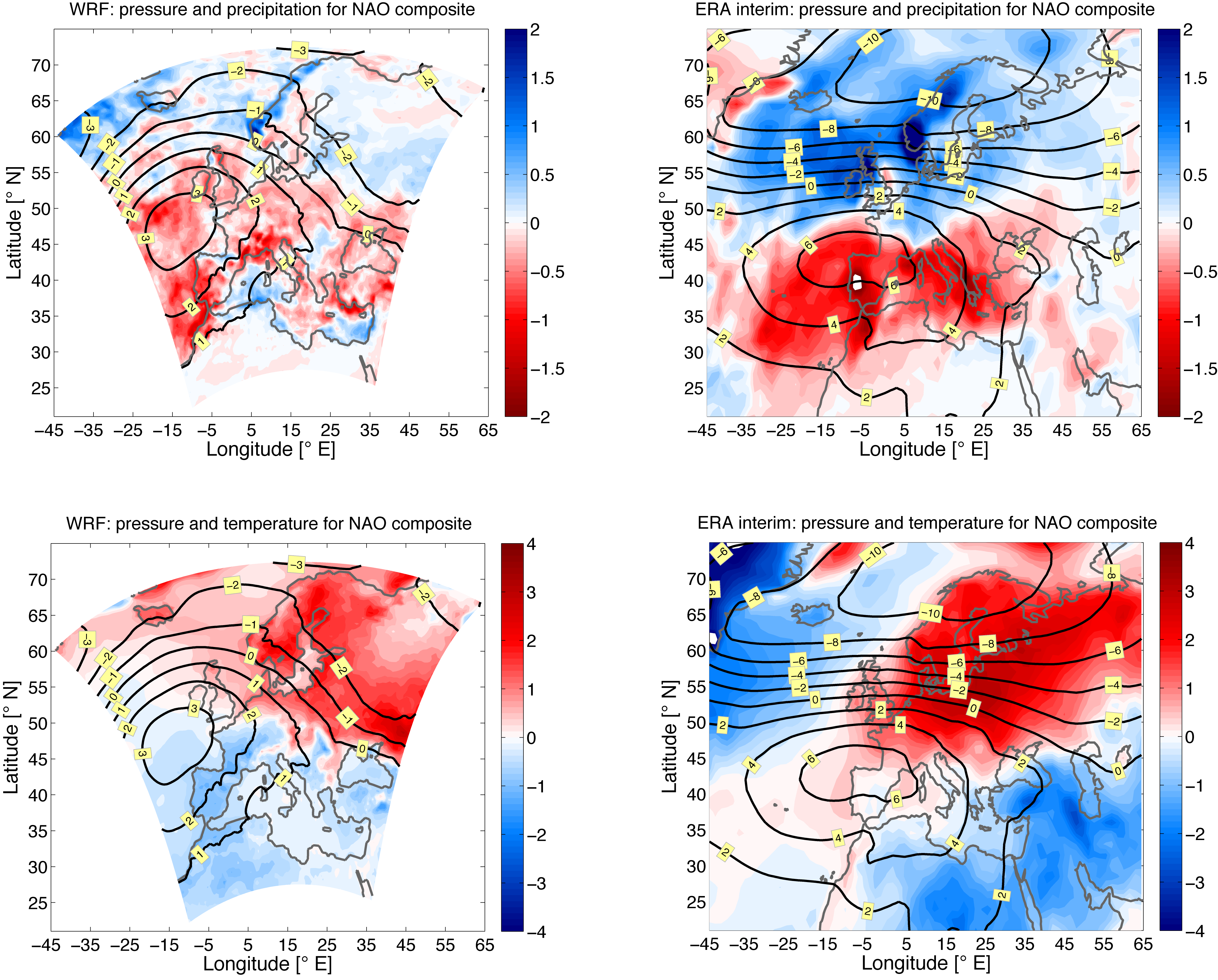In 2013 REGSCEN continued building and testing the COAWST modelling system, which now employs two-way coupling between the ROMS and the WRF models for the simulation of a well-observed polar-low case. The coupled simulation captures the essential features of the polar low despite biases, particularly in the surface fluxes. The differences between the uncoupled and the coupled simulations do not seem to be significant at the synoptic scale. However, the behaviour of the ocean model appears to be unrealistic, most likely because of the vertical mixing near steep bathymetry. Efforts are being made to improve the ROMS simulation so that the air–sea interactions during the growth of the polar low can be studied and the results published. This is also necessary in order to use the modelling system in climate experiments where small errors can compound over time to become prohibitively large. The next step is to employ the COAWST system with interactive sea ice, as part of the Arctic-CORDEX research group and contribute to an ensemble of atmosphere only and fully coupled regional downscaling of the CMIP5 models over this important region. Issues related to physical mechanisms linking the observed Arctic amplification to larger scale circulation, regional impacts of climate change, high-impact weather along the ice edge, and processes in the marginal ice zone are just a few of the scientific themes to be investigated.
Downscaling NorESM under the RCP4.5 and RCP8.5 scenarios continued in 2013 over multiple regions with a focus on Europe. Errors in some of the diagnostic variables demanded historical and future simulations to be rerun and post-processing to strict and ever-changing CORDEX specifications remain a challenge. Currently, data are available on Norway’s ESGF node. The collaborations emerging from this activity continue to bear fruit and four manuscripts are in preparation on topics that include solar power potential, snow cover, extreme winds and uncertainty quantification, as well as two manuscripts in preparation on NAO variability (see figure) and moisture transport.
Global Earth System Model projections for the end of the 21st century show generally a decrease of primary production, which is attributed to an increasing seasonal and permanent stratification caused by future warming. Regional Earth System model projections, which consider the full range of climatic induced changes in ocean hydrodynamics and biogeochemistry, find this first-order effect to be largely absent on the regional scale. Instead, highly heterogeneous patterns with both positive and negative changes were projected for the regional hydrodynamic, biogeochemistry and lower trophic level ecosystems, and hence higher up into the food web. These changes result from a complex interplay of competing processes such as wind forcing, stratification, local short wave radiation, oceanic nutrient conditions and terrestrial forcing. While this needs to be considered on a case-by-case basis, some general principles were identified. When there are multiple effects of different sign, these will tend to mitigate the climate-change impact, suggesting that some regional seas will generally be less vulnerable to climate-change effects than the open ocean. The findings were published in three different research papers.

